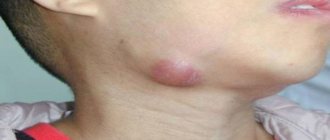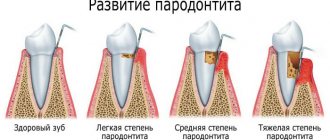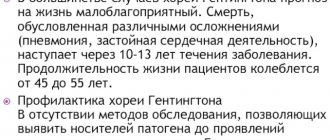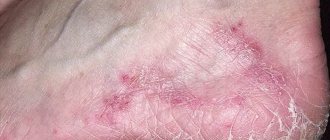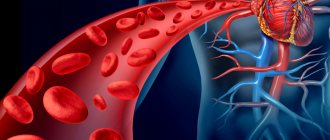Sweating helps a person adapt to high ambient temperatures, and also serves as a regulator of psycho-emotional stress. The amount of sweat increases in hot conditions, during stress, at elevated body temperatures, and also after eating - this is quite normal and there is no need to fight it.
But, if a person suffers from increased sweating constantly, for no apparent reason, then this is a pathological condition. In medicine it is called hyperhidrosis. This disease not only brings physical discomfort, but also leads to problems at work and in personal life.
If you suspect you have hyperhidrosis, treatment must be prescribed by a dermatologist or neurologist. Often, increased sweating is a symptom of another disease. Therefore, it is imperative to undergo an examination and find out the cause of the sweating disorder.
Types of hyperhidrosis
Hyperhidrosis is divided into primary and secondary, generalized and local.
- Generalized (generalized) hyperhidrosis. Manifested by increased sweating of the entire surface of the body.
- Local hyperhidrosis. It can appear on any part of the body, but most often in the armpits, palms and soles, face i Batyrshina S.V. Hyperhidrosis: method of correction / S.V. Batyrshina, L.A. Khaertdinova // Practical medicine. -2014. — No. 8 (84). — P. 16-23. .
- Primary (essential) hyperhidrosis. Appears for unknown reasons or spontaneously. In patients with primary hyperhidrosis, both an increase in the number of sweat glands and an increase in their reactivity to ordinary stimuli were noted. Typically, this variant of hyperhidrosis manifests itself from childhood, sharply intensifying during puberty. About 40% of patients note the presence of hyperhidrosis in one of the parents i Batyrshina S.V. Hyperhidrosis: method of correction / S.V. Batyrshina, L.A. Khaertdinova // Practical medicine. -2014. — No. 8 (84). — P. 16-23. .
- Secondary hyperhidrosis. Develops in various diseases and conditions (pathological and normal). Usually of a generalized nature.
Prevention of excessive sweating
To cope with increased sweating, it is recommended to follow the following rules:
- Give preference to clothes made from natural fabrics. It can be linen, cotton, silk.
- Shoes should be made of high-quality “breathable” material.
- Use special moisture-wicking antibacterial insoles.
- Do not take medications without consulting a doctor, especially antipsychotics or antidepressants.
- The shower should not be hot. The best option is contrasting. Changing temperatures helps shrink the sweat glands.
- Use herbal infusions as lotions or when taking a bath.
Be sure to visit your doctor annually for preventive examinations or if you have chronic diseases. Increased sweating may indicate pathologies in the body, delay in treatment of which can lead to serious consequences.
Symptoms and consequences
The disease has symptoms of varying severity. There are several levels of severity. At level 1, sweating does not interfere with human activity; it is invisible. At level 2, hyperhidrosis may interfere with daily life, but the disease is tolerable. At level 3, the problem causes significant inconvenience. At level 4, excessive sweating interferes with a person's ability to carry out daily activities.
In severe cases, the following symptoms are observed:
- swelling;
- pain;
- redness;
- constant cooling of the body due to evaporation of fluid;
- psychosomatics – problems in society, anxiety, rapid heartbeat.
Symptoms are aggravated by stressful situations, strong emotionality, warm seasons, body heat, as well as the consumption of chocolate products, coffee and certain spices.
Many people experience seasonal increased sweating in the spring and summer. Constant manifestations are rare - sweating occurs regardless of the weather and is not associated with activity or stress. Relapses may occur when, after hyperhidrosis, the work of the sweat glands returns to normal, and then increased sweating returns. This is usually due to hormone surges and disruptions in the functioning of the autonomic nervous system.
In most cases, the cause of the disease is not known; the pathology can be caused by high activity of the reflexes responsible for sweating. Hyperhidrosis of the armpits and palms is typical for people under 25 years of age and appears for no reason. Genetics matters; in more than 40% of cases there is a history of the disease.
Ovarian dysfunction
The pathology occurs in every 10th woman of reproductive age. This may be an ovarian cyst, but polycystic disease often occurs - a complex disease in which ovulation does not occur and the follicle begins to grow. Over time, the ovary becomes like a bunch of grapes due to the many cysts that form.
Hormonal imbalance and lack of female sex hormones lead to increased production of testosterone, the male sex hormone. It increases metabolism, causing increased sweating.
It is also promoted by autonomic disorders, accompanied by irritability, aggressiveness, and sleep disorders. Symptoms of ovarian dysfunction, in addition to sweating, are menstrual irregularities, weight changes, deterioration in health, increased hair growth, etc.
How to properly treat hyperhidrosis?
How to deal with the problem and how to cure it forever - this worries people who are faced with the disease. Can hyperhidrosis be cured? It is possible, but it will take a lot of effort.
It is important to consider the reasons for successfully getting rid of the problem. Sometimes hyperhidrosis is inherited. Currently, various methods are used to treat sweating and the unpleasant odor that accompanies it.
The first recommendation is to regularly wash problem areas. In case of excessive sweating of the feet, in most cases, washing them with cool water twice a day is sufficient. How to get rid of excessive sweating under the arms, chest and back? Shower more often. This is especially true in hot weather.
If hygiene methods are not effective, you need to use special antiperspirants. If special means do not help, you need to know which doctor to see. It is necessary to find out the reasons and get tested.
If sweating was normal before, and then excessive sweating develops, hyperhidrosis may be suspected. If the causes of the problem cannot be determined, you can resort to iontophoresis, surgery, or inject Botox.
Causes
The process of sweating occurs in all people. This is quite normal. And ordinary hygiene products help cope with this. But if we are talking about the fact that a person has profuse sweating from which he suffers, then it is impossible to do without consulting a specialist. Excessive hyperhidrosis creates discomfort and can turn into a serious problem.
Always wet and smelly armpits, palms or feet contribute to a decrease in self-esteem and lead to the fact that a person is perceived negatively by people around him. Such an unpleasant deviation can lead to a severe form of neurosis or depression. This can cause social maladaptation of a person. Public people especially suffer from increased sweating. If such symptoms cause painful anxiety, then you need to find out the source of the problem.
The causes of constant sweating depend on various factors. This does not pose a threat to the patient's health, but has annoying consequences. The problem must be solved, and not left to chance. In order to improve the quality of everyday life and get rid of the discomfort of wet laundry and unpleasant odors, you should visit a doctor. Only a specialist can answer the question of what may cause sweating.
A person's emotional state can be the cause of sweating. The patient usually feels hot and sweats due to:
- feelings of horror;
- nervous overstrain;
- anxiety;
- fear or fright;
- states of apathy and depression;
- stress.
People who have an easily excitable nervous system suffer from such manifestations especially often. In the first minutes of stress or fear, their hands and armpits become wet. A sudden feeling of fear leads to large drops of sweat appearing in the area of the nasolabial triangle. In this case, consulting a doctor is simply necessary, since such a state of the nervous system may indicate not just excessive sweating, but a disease of one of the systems of the human body.
Both career plans and personal life can be ruined due to excessive sweating. Even joyful events sometimes cause sweating. As a result, a person suffers from a disgusting smell and wet spots on clothes. In this case, it is necessary to make an appointment with a neurologist, since we may be talking about a neuropsychic or somatic disease.
Emotional stress, which causes excessive sweating, is an indicator of impaired functioning of the autonomic nervous system. Contacting a psychotherapist will help solve this unpleasant problem. The specialist will find out the causes of hyperhidrosis in the body. Avoiding a visit to a specialist will only make the problem worse.
The doctor will examine the patient, study the medical history, analyze the symptoms and interpret the test results. All this will make it possible to establish the causes of excessive sweating and prescribe appropriate treatment.
At the doctor
Many people ask which doctor treats hyperhidrosis. First you need to see a therapist, you may also need to consult the following specialists:
- dermatologist - to exclude dermatosis and inflammation of the sweat glands;
- neurologist - to check for autonomic disorders;
- endocrinologist - to assess the functioning of the thyroid gland, check hormone levels and exclude diabetes;
- cardiologist - to check for the absence of angina pectoris;
- orthopedist – often sweating feet is associated with flat feet.
Only a qualified specialist can determine the diseases that cause excessive sweating. The attending physician prescribes various studies.
Heavy sweating can be a sign of a number of other pathologies, which only a doctor can determine. If no diseases are detected, then they fight the problem using standard methods.
Hyperhidrosis test
The extent of hyperhidrosis and its boundaries are determined using the Minor test. You need to apply a 2% iodide solution to the armpit area. Next, let the liquid dry and sprinkle the skin with starch. In the presence of excessive sweating, the skin becomes purple, sometimes black. The area of manifestation is circled and marks are made to evenly distribute the antiperspirant over the skin.
Diagnostics
To determine the characteristics of hyperhidrosis, examination and special diagnostics are carried out. There are several methods that can be used to more accurately characterize the location and intensity of high sweating:
- Gravimetric method . To determine the intensity of hyperhidrosis, apply a piece of absorbent paper to the dry surface of the skin. The weight of the paper is determined in advance on an accurate scale. After a minute, the sheet is removed and weighed again to determine the amount of sweat that appears.
- Chromatographic method . Its goal is to establish the spectrum of fatty acids in the secreted secretion.
- Minor's sample . With its help, the localization of sweating is determined. The skin is dried, smeared with iodine solution and sprinkled with starch. The areas where excessive sweating occurs will turn black and blue.
- Bacteriological culture . With its help, you can identify pathogenic microorganisms that cause an unpleasant odor. This will make it possible to determine what causes sweating.
These methods will help specialists determine what causes sweating, its type and intensity. In the future, the results can be used to treat hyperhidrosis.
Use of products: antiperspirants and deodorants
Antiperspirants are not medicines, but products that prevent increased sweating after treatment. For hyperhidrosis, it is better to use products that are sold in pharmacies, or resort to traditional medicine recipes. It is recommended to combine products, adhering to the rules of use.
Deodorants for hyperhidrosis are applied before bedtime so that the effect begins in the morning. This is the optimal time for application, since the glandular ducts do not function at night. The application area must be dried, you can use a hairdryer.
The composition often includes aluminum chloride hexahydrate. Such antiperspirants are medicinal and are used in the evening, before bed, once every five days. With continued use, you can achieve normalization of sweating and switch to your usual products.
What traditional medicine offers:
- alum – minerals with antibacterial effects;
- Jojoba oils, as well as tea tree and coconut oils, are effective against sweating;
- kaolin powder.
To get rid of the accompanying unpleasant odor, use baking soda.
Preventive recommendations
Expert advice will help to qualitatively improve the patient’s standard of living:
- Vitamins and sweating . Taking a complex of minerals and vitamins will improve your health and help quickly solve the problem of heavy sweating.
- Timely identification of the cause . It is recommended to undergo a preventive medical examination on time. This will help to identify the problem early and make it possible to begin treatment therapy in a timely manner.
- Proper nutrition . Overeating before bed will lead to increased sweating. It is recommended to avoid caffeinated drinks, tea and alcohol. Fatty foods will interfere with restful sleep; it may well provoke activation of the sweat glands.
- Combating nervous tension and stress . We must not forget about rest and relaxation. Classical music or an interesting book before bed will improve the patient's mood.
- Refusal of synthetics . Bed linen should be made of cotton or linen fabric.
- Airing before bed . Stuffiness and stale air are what cause increased sweating.
To establish the causes of increased sweating and begin treatment, you need to go to the clinic and undergo an examination.
Botulinum toxin for hyperhidrosis
Botox is a widely known means of preserving youth. Another way to use it is to reduce excessive sweating.
Botulinum toxin injections are used to treat local hyperhidrosis by injecting the substance into the problem area. The action of the drug blocks impulses and eliminates the effect of hyperhidrosis. In most cases, the effect of the procedure lasts 6-8 or more months i Rakhmatullina E.F. Botulinum toxin type A in the treatment of autonomic disorders / E.F. Rakhmatullina // Practical medicine. — 2013. — No. 1 (66). — P. 50-54. .
Features of the effects and benefits of Botox injections
Medications for the treatment of excessive sweating of the armpits include botulinum toxin type A, which is a strong poison of organic origin. In small doses it is safe for the body - it is used to block nerve and muscle impulses.
When Botox is injected under the skin, impulses from sweating fibers are not transmitted to the glands - hyperhidrosis stops. At the same time, heat and water exchange of the skin is not disturbed.
Treatment with this method is effective in the second and third stages of the disease, when severe sweating is observed due to nervous tension, discomfort in communication, or a person has constant sweating and wet clothes under the arms. During the first stage, it is recommended to use aluminum chloride antiperspirants that block the sweat glands for a period of 3 to 4 days.
Among the advantages:
- long-lasting effect, lasting up to 10-12 months;
- safety of injections provided the correct injection technique is used;
- short recovery period.
Contraindications
Absolute contraindications for the use of botulinum toxin are neuromuscular disorders, pregnancy, lactation, local inflammatory process, hypersensitivity to the components of the drug. Relative contraindications are a history of neurological diseases, use of anticoagulants and antiplatelet agents, chronic diseases in the acute stage, hemophilia.
Treatment technique with botulinum toxin
The procedure does not require special preparation and is carried out after a preliminary iodine-starch test. The area of the blue spot and its intensity are assessed. To eliminate pain, a local anesthetic is applied to the skin. The composition is administered intradermally at intervals of 1.5-2 cm to a depth of 2 to 3 mm. Together with Minor's test, the procedure takes from 40 to 60 minutes.
Post-procedure care
After the session, slight swelling, redness and nodules are observed in the armpit area, which disappear after 3-4 days. Botulinum toxin begins to act on the 4th day, the final result will be visible after 2 weeks and lasts for 10-12 months, it depends on the characteristics of the body. Then the treatment must be repeated. Each time the amount of the drug decreases, and the duration of exposure increases.
Recommendations for care after the procedure:
- for three days, massage, which reduces the effectiveness of the product, and the use of antiperspirants are contraindicated;
- For seven days it is not recommended to visit the bathhouse, swimming pool, actively engage in sports or drink alcohol.
Which drug is better?
For injection treatment of sweating, drugs containing botulinum toxin type A are used, which blocks nerve impulses traveling to the sweat glands. The difference lies in the result obtained, the price, the consumption of the product and the duration of the effect. We invite you to familiarize yourself with the characteristics of the drugs.
| Name | Efficiency, % | Duration of effect, months | Approximate consumption, units. | Approximate cost, US dollars | |
| for a unit | per session | ||||
| "Botox" | from 90 to 100 | from 8 to 10 | from 80 to 100 | 3,75 | from 300 to 375 |
| "Dysport" | from 80 to 100 | from 8 to 10 | from 200 to 300 | 1,5 | from 300 to 450 |
| "Xeomin" | from 80 to 90 | from 6 to 8 | about 80 | 2,5 | 200 |
| "Lantox" | about 80 | about 6 | about 100 | 2,5 | 250 |
Injecting botulinum toxin type A under the skin is a safe, simple and effective treatment for excessive sweating.

